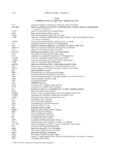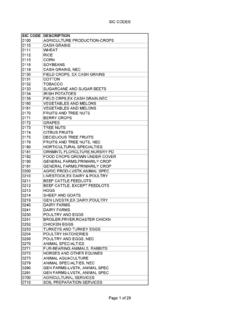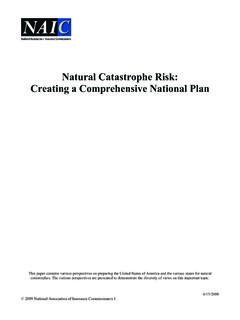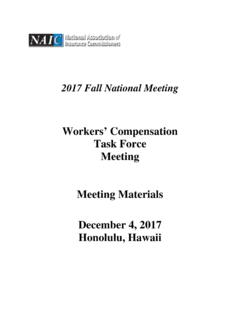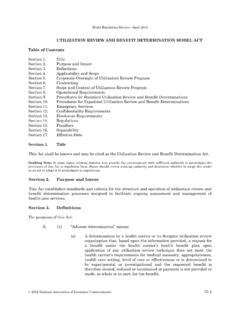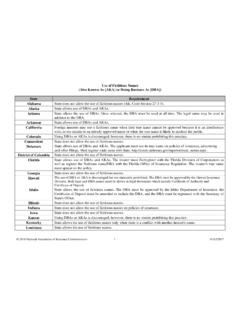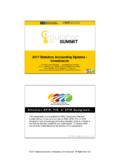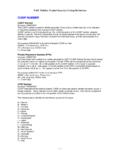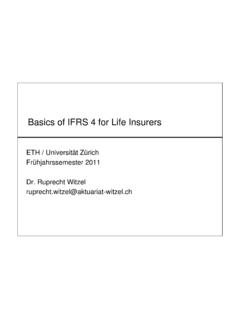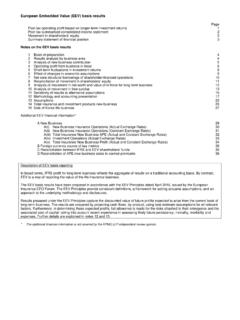Transcription of A Comparison of Solvency Systems: US and EU - naic.org
1 5/22/2008 A Comparison of Solvency Systems: US and EU US Solvency EU Solvency IIPrinciples or RulesPrinciples are included in numerous naic handbooks. The statutory accounting framework is based on overarching statements of concepts; the aims of the Risk-Based Capital (RBC) minimum capital requirement framework are articulated as high level statements of concept; and the draft Valuation Manual would include principles. principles are not consolidated in one framework document. Significant numbers of well-defined rules state laws and regulations, naic documents: Accounting Practices and Procedures Manual, Financial Examiners Handbook, Financial Analysis Handbook, Risk-Based Capital calculationsOver-all Framework Directive aims to be Principles-Based.
2 Note: The Framework Directive is still in draft although largely expected to be unchanged (with group issues, own funds --surplus funds, and the calculation of the lowest required capital (MCR), to be the major discussion items left). Implementation Measures are not yet defined so it is unclear the level of rules. Note: Some potential Implementation Measures are embedded within Consultation Papers, but the Implementation Measures are not drafted and State-based system of regulation; Uniform Financial Regulation naic Accreditation Program encourages certain levels of uniformity in regulatory practices and standards. The Solvency II Framework Directive is a requirement by law for all EU member states so the principles are required and will be uniform.
3 (Lamfulussy Level 1) Implementation Measures (which will include the standardized capital model) will be driven by the European Commission with veto power of Parliament and EIOPC. These are therefore requirements for all EU members so uniformity is expected. (Lamfalussy Level 2) Supervisory Guidance and Standards, to be written by CEIOPS, are not legally binding but will result from agreements between supervisors within CEIOPS. The ability to achieve uniformity is expected, but without legal binding, more time might be needed to achieve uniformity. (Lamfalussy Level 3) Differences between Member states could result from situations such as the following.
4 Judgment decisions ( whether internal models pass required tests and can be used to determine a company s capital requirement), specific requirements or internal rules Attachment Two-B Financial Condition (E) Committee 12/08/08 2008 National Association of Insurance Commissioners15/22/2008 US Solvency EU Solvency IIestablished (such as the regime establishes a minimum # of years between financial examinations), and supervisory reporting requirements ( reporting forms or required information). Differences will exist between capital requirements of firms because of flexibility (resulting from the use of internal models or substitution of parameters in the standard formula).
5 The European Commission is in charge of monitoring compliance and enforcement of requirements. (Lamfalussy Level 4) No accreditation-type program appears to be contemplated. Quality Standards of EachRegulatoryAuthority The naic Accreditation Program provides a process whereby Solvency regulation of multi-state insurance companies can be enhanced and adequately monitored with emphasis on the following: adequate Solvency laws and regulation in each accredited state to protect consumers and guarantee funds. effective and efficient financial analysis and examination process in each accredited state appropriate organizational and personnel practices in each accredited state.
6 The frequency of examination & analysis and the timeliness of action resulting from material adverse findings relate to the quality control process ensured by the accreditation standards. The European Commission is in charge of monitoring compliance and enforcement of requirements, but the level of analysis is not yet communicated. PublicDisclosureUniform public Financial Reporting through standardized format of the naic Annual and Quarterly Statement Blanks (Instructions provide for consistent interpretations of disclosure requirements); Significant Detail reported publicly including details on investments, Uniformity is expected, but it appears the public reporting will not be as extensive nor as uniform as the public reporting There is an Insurance Account Directive (separate from Solvency II) that was adopted in the 90s that provide rules for public financial reporting.
7 After the Solvency II directive is Attachment Two-B Financial Condition (E) Committee 12/08/08 2008 National Association of Insurance Commissioners25/22/2008 US Solvency EU Solvency IIinvestment quality, P&C loss reserve development adopted with an aim to be compatible with ifrs requirements, pressure on the Insurance Account Directive is expected in order to make changes to increase compatibility with ifrs . Governance Model Audit Rule Based on premium thresholds, requires a management assessment of the effectiveness of internal control over financial reporting and an independent audit committee.
8 Governance Subgroup of the Principles-Based Reserving WG is reviewing needs for governance requirements in the Life Insurance Principles-Based Reserving ProjectGiven that companies will be assessing their own capital needs through enterprise risk management processes and some will be modeling their capital requirements, significant responsibility is placed on management of the company and internal controls. Companies will have annual written policies explaining their risk management, internal controls, internal audit, and any outsourcing. EnterpriseRiskManagement Insurance companies are expected to manage their risks and there is encouragement from the regulatory regime to do so.
9 Risk-based capital requirements encourage focus on risk and varying capital needs depending on risk. A company s reinsurance, investment, marketing, and underwriting decisions require risk analysis; The enhanced risk-focused examination process includes significant focus on risk and how the risk is managed, along with evaluation of governance. However, there is no requirement for companies to utilize Enterprise Risk Management. Enterprise Risk Management requirements are expected to be included in Implementation Measures. The following are IAIS standards, which are expected to be implemented in Solvency II: An insurer should establish and maintain a risk tolerance statement which sets out its overall quantitative and qualitative tolerance levels and defines tolerance limits for each relevant and material category of risk.
10 An insurer should regularly perform its own risk and Solvency assessment (ORSA) to assess the adequacy of its risk management and current, and likely future, Solvency position. The ORSA should encompass all reasonably foreseeable and relevant material risks. The assessment should identify the relationship between risk management and the level and quality of financial resources needed and available. The supervisor should undertake reviews of an insurer's risk management processes and its financial condition. The supervisor should use its powers to require strengthening of the insurer s risk management, Attachment Two-B Financial Condition (E) Committee 12/08/08 2008 National Association of Insurance Commissioners35/22/2008 US Solvency EU Solvency IIincluding Solvency assessment and capital management processes, where necessary.

